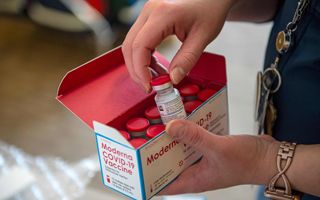(Telestock) – Moderna biotechnology company specializing in messenger RNA (mRNA) therapeutics and vaccines, plans a 2025 turnover included between 2.5 and 3.5 billion dollarsbelow analysts’ expectations of $3.74 billion (according to LSEG data). For 2026-2028, the company expects a compound annual growth rate of over 25% or more, driven by new product launches.
Moderna expects its commercial respiratory franchise to be profitable in 2024 and beyond. Additionally, the company is upgrading its 2024 projected R&D expenses to approximately $4.8 billion, primarily driven by the purchase of a Priority Review Voucher and selling, general and administrative expenses to approximately $1.2 billion. Additionally, it is reducing its planned investments in research and development by approximately 20% for 2025-2028, from $20 billion to $16 billion for the period through prioritization.
The company aims to complete the majority of its respiratory investments by 2026 and is increasing investment in oncology research and development and is calibrating its investments in latent and other vaccines and therapies for rare diseases.
Moderna expects to reach the break even on a cash operating cost basis (which excludes stock-based compensation, depreciation and amortization expenses) with $6 billion in revenue. The company expects to achieve this goal in 2028 and claims to have sufficient capital to fund its plans until it breaks even on a cash cost basis without raising additional capital.
“Moderna now has five respiratory vaccines with positive Phase 3 results and plans to submit three for approval this year. Additionally, we have five non-respiratory products in pivotal studies in cancer, rare diseases and latent vaccines with potential for approval by 2027. Our proven likelihood of success in R&D has exceeded industry standards at every stage of development,” said CEO Stéphane Bancel – The size of our late-stage pipeline, combined with the challenge of launching products, means we now have to focus on delivering these 10 products to patientsslow the pace of new R&D investment and build our commercial business.”
